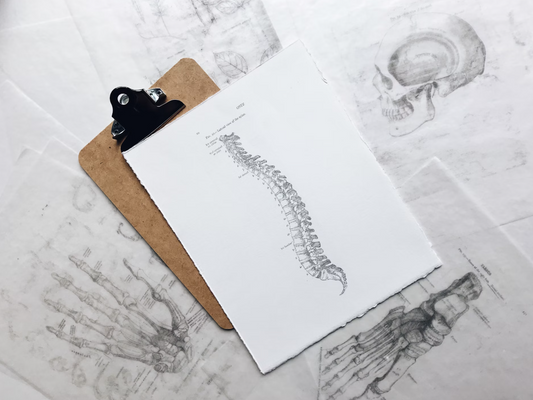After an intense workout, your body is in need of recovery to repair muscles, restore energy, and regain balance. While most people focus on hydration, stretching, and nutrition, breathing is an often-overlooked yet powerful tool that can significantly enhance post-exercise recovery. Controlled, mindful breathing helps activate the parasympathetic nervous system, reduce muscle tension, improve circulation, and even decrease the perception of fatigue. In this article, we’ll explore how breathing influences recovery after exercise and provide a step-by-step guide to using breathwork to optimize your recovery.
How Breathing Affects Post-Exercise Recovery
When you exercise, your body undergoes a range of physiological changes. Breathing is central to how your body adapts and recovers. Here's how it works:
1. Activating the Parasympathetic Nervous System: Exercise, especially intense physical activity, stimulates the sympathetic nervous system—the body’s “fight or flight” response. This state increases heart rate and blood pressure as your body prepares for action. After exercise, it’s essential to shift to the parasympathetic nervous system (also known as the “rest and digest” system), which helps calm the body and promote recovery. Controlled breathing techniques, such as slow, deep inhales and exhales, activate this system and help the body transition into a state of relaxation and repair.
2. Improving Circulation and Oxygen Flow: During exercise, your muscles consume a lot of oxygen, and as a result, waste products like carbon dioxide and lactic acid accumulate. Deep breathing encourages better blood circulation, helping to flush out metabolic waste from your muscles and bring in fresh oxygen. This process speeds up recovery by supporting the repair and rejuvenation of muscle tissues.
3. Reducing Muscle Tension: After a workout, it’s common for muscles to feel tight or sore. Deep, slow breathing helps reduce muscle tension by triggering a relaxation response in the body. The act of breathing deeply into the abdomen engages the diaphragm, which can relieve tightness in the upper body and promote full-body relaxation.
4. Managing Stress and Fatigue: Exercise-induced fatigue can also trigger mental and physical stress. Breathing exercises can help manage the psychological aspect of post-workout recovery by inducing a sense of calm and reducing stress hormones like cortisol. Additionally, controlled breathing techniques help you feel more energized and alert, even after an exhausting workout.
Step-by-Step Guide to Using Breathing for Post-Exercise Recovery
Breathing can be seamlessly integrated into your post-exercise routine to help speed up recovery. Below is a step-by-step guide to using breathwork to optimize your recovery process.
Step 1: Cool Down with Slow, Deep Breaths
Why It Helps: After your workout, a cool-down is crucial to help your body transition from an active to a restful state. Slow, deep breathing encourages the parasympathetic nervous system to kick in, signaling your body to calm down and repair.
How to Do It:
- Find a comfortable seated or lying position. Close your eyes and focus on your breath.
- Inhale deeply through your nose for a count of four, allowing your abdomen to rise as your diaphragm engages.
- Exhale slowly through your mouth for a count of six, focusing on lengthening the exhale.
- Repeat this cycle for 2-3 minutes, ensuring your breath is deep, slow, and controlled.
Step 2: Practice Diaphragmatic Breathing
Why It Helps: Diaphragmatic breathing, also known as belly breathing, is essential for activating the body's natural relaxation response and encouraging better oxygen flow. This type of breathing helps relieve post-workout tension, especially in the chest and abdominal areas, which can be tight after a strenuous workout.
How to Do It:
- Lie on your back with your knees bent and your feet flat on the floor.
- Place one hand on your chest and the other on your abdomen.
- Breathe deeply through your nose, allowing your belly to rise as you inhale. Try to keep your chest still.
- Slowly exhale through your mouth, allowing your belly to fall. Focus on making the exhale longer than the inhale.
- Continue this deep, controlled breathing for 5-10 minutes, gradually calming your body.
Step 3: Engage in Box Breathing (Square Breathing)
Why It Helps: Box breathing is an effective method for managing post-exercise fatigue, especially after high-intensity workouts. By focusing on the rhythm of the breath, box breathing can reduce stress, promote relaxation, and regulate your heart rate.
How to Do It:
- Inhale slowly through your nose for a count of four.
- Hold your breath for a count of four.
- Exhale slowly through your mouth for a count of four.
- Hold your breath again for a count of four.
- Repeat this cycle for 4-5 minutes, focusing on each breath and maintaining the same pace throughout.
Step 4: Try Alternate Nostril Breathing
Why It Helps: Alternate nostril breathing is a calming practice that helps balance the body and mind. It’s particularly useful for reducing post-exercise stress and improving mental clarity, allowing you to feel refreshed and centered.
How to Do It:
- Sit comfortably with your spine straight.
- Close your right nostril using your right thumb and inhale deeply through your left nostril.
- Close your left nostril using your right ring finger, and exhale slowly through your right nostril.
- Inhale through your right nostril, then close the right nostril and exhale through your left.
- Continue alternating nostrils for 5-10 minutes, focusing on a slow, steady breath.
Step 5: Hydrate and Integrate Breath with Stretching
Why It Helps: Stretching after a workout promotes flexibility and reduces muscle soreness. When combined with deep breathing, stretching can help lengthen muscles more effectively, release built-up tension, and enhance circulation.
How to Do It:
- While stretching major muscle groups (such as hamstrings, quadriceps, calves, and shoulders), synchronize your breath with the stretch.
- Inhale deeply as you prepare to stretch, and exhale slowly as you move into the stretch.
- Hold each stretch for 20-30 seconds, continuing to breathe deeply and slowly to ensure muscle relaxation.
Step 6: Utilize Post-Exercise Breathwork for Mental Recovery
Why It Helps: Mental fatigue can be just as taxing as physical fatigue after a workout. Breathwork helps calm the mind, reduce anxiety, and reset your mental state.
How to Do It:
- After completing your physical recovery routine, take a few minutes to engage in focused breathwork.
- Try deep, slow breathing or a mindfulness practice, focusing on each breath.
- Allow yourself to tune into how your body feels after the workout and use your breath to create a sense of calm.
Conclusion
Breathing is a powerful, often-overlooked tool for accelerating post-exercise recovery. By incorporating mindful breathing techniques into your routine, you can activate your body’s natural relaxation mechanisms, improve circulation, reduce muscle tension, and alleviate mental fatigue. Whether you’re cooling down after a run, engaging in restorative yoga, or simply unwinding after a challenging workout, conscious breathwork can optimize your recovery and help you feel better faster.
Remember to focus on slow, controlled breathing and make it an integral part of your post-workout routine. With consistent practice, you'll not only improve your recovery but also enhance your overall well-being and athletic performance. Take a deep breath and embrace the power of your breath for recovery!




